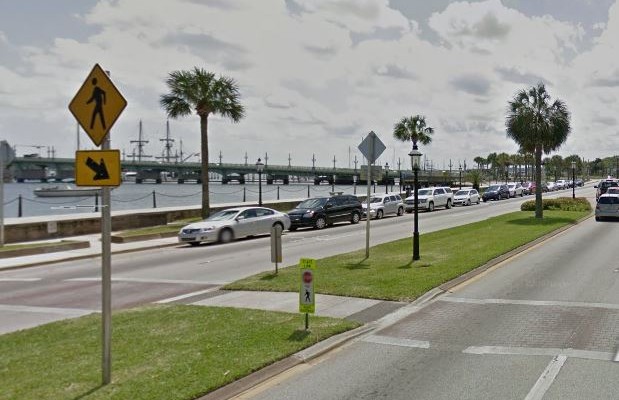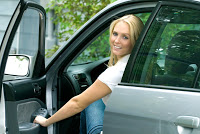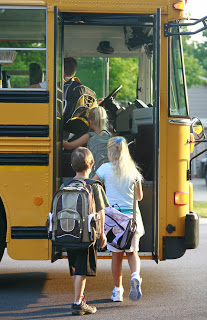Tag Archive: pedestrian safety

Ask The Traffic School Instructor: Do Pedestrians Always Have The Right-Of-Way?
January 13, 2016
Question: I was attending a work related safety training session and the instructor said that, in Florida, pedestrians don’t have the right of way. Is that true?
Answer: For the most part, no, it isn’t true but it depends on the circumstances.
First off, we have to look at the term “right-of-way.” There’s a lot of confusion about that term and people tend to think in terms of who has the right-of-way in a given situation when, in fact, no one has the right-of-way. The law doesn’t give anyone the right-of-way; it only says who should give up or yield the right-of-way to another. You can’t take the right-of-way, you can only give it to someone else and the law lists the circumstances in which a driver should give up the right-of-way to another.
Let’s look first at what the law requires of pedestrians:
- On roadways where there’s a sidewalk, pedestrians must stay off the paved portion of the roadway reserved for vehicles.
- If there’s no sidewalk, pedestrians are required to walk on the shoulder on the left side of the road facing oncoming traffic.
- Pedestrians are only allowed to cross the roadway at a marked crosswalk or at an unmarked crosswalk at an intersection. (Even if it’s not marked, the area next to an intersection is considered to be a crosswalk.)
- Pedestrians are required to obey all traffic signals and signs just like drivers.
- Even if they’re crossing at a marked or unmarked crosswalk, pedestrians are required to give up the right-of-way if a vehicle is approaching so closely that it wouldn’t be possible for it to safely stop in time.
Now let’s look at those times when drivers are required to give up the right-of-way to pedestrians:
- Drivers are required to yield the right-of-way by slowing or stopping, if necessary, when a pedestrian is crossing the street in a marked or unmarked crosswalk.
- If a pedestrian is crossing the street at a crosswalk and is on the driver’s side of the road or will be on the driver’s side of the road by the time the driver gets there, the driver is required to slow and stop, if necessary, for the pedestrian to pass.
- On a multi-lane roadway, if a driver ahead has stopped for a pedestrian in the crosswalk, drivers approaching in the other lanes must also stop until the pedestrian has safely crossed.
- When a driver is entering the roadway from a parking lot, driveway, or alley, the driver must yield to pedestrians on the sidewalk before proceeding.
- When turning a corner, drivers must yield to pedestrians who are already in the crosswalk.
Special circumstances:
If a blind or visually impaired pedestrian, using a white cane or guided by a guide dog, is attempting to cross the street, whether at a crosswalk or not, all traffic in both directions must come to a complete stop.
Watch for children:
Watch out for children, especially near schools, parks, and residential zones. Kids are in their own little world and they don’t care what the law says.
Vulnerable road users
A new law went into effect in Florida a couple of years ago that lists those who are regarded as vulnerable road users. Vulnerable road users include:
- Pedestrians, including those working on the roadway
- Users of bicycles, mopeds, or scooters
- Skaters and skateboarders
- Horse drawn carriages
- Motorcyclists
- Someone riding an animal
- Users of electric mobility assistance devices
- Users of wheelchairs
- Tractors or other vehicles designed for farm use
The new law requires motorists who are involved in a crash with a vulnerable road user to stop and render aid. Those who fail to do so will face severe penalties.
The lists above don’t include every instance covered under the law, just the basic ones. To see what Florida law says about pedestrians, read: The 2015 Florida Statutes – 316.130 Pedestrians; traffic regulations.—

Don’t Let the Grinch Steal Your Christmas
November 21, 2011
For those with long commutes to work and back and those who drive very little, the driving situation during the holidays can be a nightmarish situation. The holiday season is supposed to be about peace on earth and kindness to others but it seems that, once drivers get caught up in the holiday shopping rush, all of that goes out the window and it is every man for himself. To help you cope with the holiday driving situation and keep you safe on the road, here are a few reminders.
Planning – High gasoline prices have led many to consolidate trips to save money. That is also a good tip for the holiday season:
- Create and try to stick to a shopping list for everyone on your gift giving list. You’ll spend less time and money if you know exactly what you are after. Try to avoid browsing that will lead to impulse buying and keep you out longer.
- Shopping online can help you avoid going out into traffic. You can also order items online for pick-up at your local store so you can do a quick in –pickup – and out.
- Try to get all your shopping done in one or two days; that way you can relax and enjoy the rest of the holiday season.
- Shop early! Retailers are trying to lure customers with early sales so they aren’t stuck with a left over inventory.
- Plan on being stuck in traffic and allow yourself plenty of extra time. That way, you won’t be tempted to take chances behind the wheel and you won’t be as frustrated.
Dealing with other drivers – The frenetic pace of the holiday season seems to bring out the worst in some drivers. Don’t let a “Grinch” driver get to you.
- It seems as if no other time of the year results in as many clogged intersections. When drivers pull out into a clogged intersection and the light changes, everyone is stuck. If you can’t clear the intersection, remain behind the white stop line until the traffic ahead moves enough that you can get all the way across. Remember, if you are stuck in the intersection when the light changes, you could get an automatic ticket from a red light camera.
- Remember that you can’t take the right-of-way; you can only give it up to another driver. If someone tries to hog the right-of-way, give it to them. Fighting for the right-of-way or a parking spot isn’t worth the possibility of a collision or a road rage incident.
- Don’t try to retaliate against another driver by yelling, making gestures, or honking your horn. That type of behavior could tip someone over the edge into a road rage situation.
- Remember the F.I.D.O. principle. Forget It and Drive On. There is nothing you can do to change another driver’s behavior. Just let it go and keep out of their way.
Pedestrians – There will be a lot of pedestrians in parking lots and on the roads at this time of year.
- Remember that pedestrians always have the right-of-way.
- Small children are excited and even more impulsive at this time of year. Anticipate that they may run out into traffic.
- Pedestrians may be bundled up against the cold. Hats, mufflers and scarves may interfere with vision and hearing. Count on pedestrians not noticing your approach.
Distractions – As if the driving situation isn’t bad enough during the holiday season, distracted drivers make it worse.
- It is understood that you are in a rush, but try to avoid eating in the car while driving. Trying to eat and drink distracts us from the very important job of watching the road ahead. Giving yourself time to eat in a restaurant will allow you to relax and calm down before going back out into traffic.
- Put the cell phone away! Don’t try to use your cell phone and especially don’t text unless you are pulled safely off the road. Cell phone users tend to slow traffic and you don’t want to add to the congestion.
Have a happy and, above all, a safe holiday season with your loved ones.

Make your Trip to School a Safe One
October 5, 2011
Word’s out: summer’s officially over. Other than the nationwide-groans from kids, there’s also something else to be concerned about: children’s safety. These kids may be in their preschool years, or they may be at the driving age — bottom line is: pedestrian safety is a still a genuine concern.
Here are some tips both for parents and children to make their daily trip to school a safe one:
- Parents should have a talk with their children regarding safety. For the younger kids, parents should be giving out more specific advice than “don’t talk to strangers.” These talks can and should also include the following topics: looking left to right before crossing, crossing/getting off the bus only where it is allowed or with adult supervision and numbers to call should they find themselves lost. For the older kids, maybe it’s time to introduce a Parent-Teen Driving Contract — to put down in paper what is specifically not allowed in the scope of their driving privilege/responsibility.
- Drive carefully. Be the example for your children. Always buckle your seat belt before driving, remove all distractions from the vehicle and always obey traffic signs or lights. Always keep the vehicle maintained so it doesn’t break down and the kids (or you!) won’t get late.
- If the school is within walking distance from the home, parents should survey the route their children take. Is there a “walking school bus” (a group of kids on their way to school accompanied by an adult from the neighborhood) near the area where you live?
- For parents and teen drivers: always be aware of school zones. The penalties of going too fast or driving up where you’re not supposed to is even greater than when you’re on the road — even worse, you may get in an accident. Remember that there is a speed limit of 25mph in school zones which apply before and after school hours.
- Have fun: school may end up being the best time for children, and a fond memory for parents. Making sure you and your family is safe ensures that you’ll cherish the moment more.
